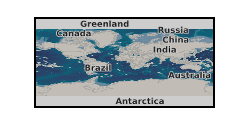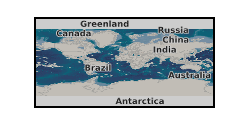Creep
Type of resources
Topics
Keywords
Contact for the resource
Provided by
Years
Formats
Update frequencies
-

Mechanical datasets of a creep rig experiment which quantified grain boundary sliding in an olivine bicrystal sample. A single test was performed for 4 x 104 s at a maximum temperature of 1400 °C. The data from the experiment are presented in a spreadsheet of mechanical data (piston force and linear displacement per time and furnace temperature). A picture of the experimental geometry used and electron backscatter and graphs obtained from the mechanical data are included. The results showed that it is possible to simulate boundary sliding along bicrystal surfaces in a creep rig
-

This dataset contains results from nanoindentation testing of five shale samples from the Horn River Basin (core from wells A100B/94 and D94A/94). The samples are from the following formations: A3 Fort Simpson, A6 Fort Simpson, D1 Muskwa, A16 Otter Park, and A20 Evie. The data is in two sets. Set 1 includes nanoindentation data from all samples, with grids conducted both parallel and perpendicular to the bedding plane. In Set 2, additional chemical analysis of select grids (on samples A3, A6 and A20) was undertaken using SEM/EDS. Both sets include the following tab-separated .txt files: grid_para.txt [Load-displacement-time data for each indent (parallel indentation)]; grid_para_summary.txt [Reduced elastic modulus, hardness and creep modulus for each indent (parallel indentation)]; grid_perp.txt [Load-displacement-time data for each indent (perpendicular indentation)]; grid_perp_summary.txt [Reduced elastic modulus, hardness and creep modulus data for each indent (parallel indentation)]. Set 2 also includes .tif files containing SEM images and EDS chemical analysis of the grids. The data has been filtered to remove indents which show 'pop-in' behaviour or time-displacement curves that do not conform to a logarithmic fit. ACKNOWLEDGMENT - The authors wish to thank the Natural Environment Research Council (NERC) for funding this research through the SHAPE-UK project (grant numbers NE/R018057/1, NE/R017840/1, and NE/R017565/1), which forms Challenge 3 of the UKUH (Unconventional Hydrocarbons in the UK Energy System) programme.
-

The data includes the raw mechanical data (time, load, displacement, pore pressure, pore pressure volume and confining pressure) and the meaningful processed data used to plot figures and draw main conclusions (stress, strain, strain rate, pore volume change, effective mean stress, inelastic strain, yield points and Youngs modulus). In total 10 samples of Bluersville Sandstone were deformed under either constant strain rate or constant stress (creep) conditions and at room temperature, 75°C, 150 °C. Bluersville Sandstone is from Bleurville, Vosges, north-eastern France. This pale beige coloured sandstone has a starting porosity of 22.7%Used as clean, porous sandstone of homogenous nature. Data generated at University College London on a conventional triaxial apparatus. This dataset is used and fully described/interpreted in the paper: M. Jefferd, N. Brantut, P.G. Meredith and T.M. Mitchell, The Influence of Elevated Temperature on Time Dependent Compaction Creep in Sandstone , submitted to J. Geophys. Res.
 NERC Data Catalogue Service
NERC Data Catalogue Service